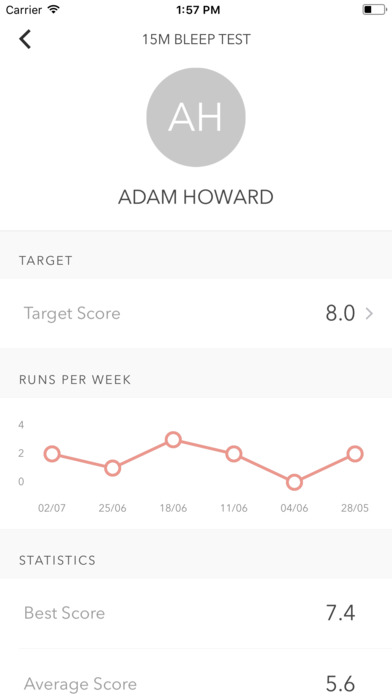


The test is therefore not standardized and its reliability and validity has not been sufficiently studied. The exercise workload is not quantified since the subjects walk at their own pace, producing test results influenced by the subjects’ own inclinations and comfort zones. However, the 1500-m fast walk has certain drawbacks. The 1500-m fast walk (Japan’s Ministry of Education, Culture, Sports, Science and Technology, 2000) and 20-m shuttle run test (20-m SRT) (Leger and Lambert, 1982) are currently used as field tests for middle-aged adults and they are recommended in Japan by the Ministry of Education, Culture, Sports, Science and Technology (MEXT). CPX provides an accurate measure of VO 2max, but it is not widely used in clinical settings because it requires expensive, complicated equipment and trained staff, whereas field tests are a widely used alternative because they are simple, inexpensive, and do not require specialized equipment. VO 2max can be evaluated using a cardiopulmonary exercise test (CPX) or field tests (Leger and Lambert, 1982 Singh et al., 1992).

Maximal oxygen uptake (VO 2max) and anaerobic threshold (AT) are recognized as objective and valid standards for aerobic fitness (Farrell et al., 1979 McArdle et al., 1981 Taylor et al., 1955) and the proper evaluation of VO 2max and AT is, therefore, important in assessing the health and healthcare needs of middle-aged adults. It is clear that aerobic fitness in middle-aged adults correlates negatively with risk factors for high blood pressure and coronary artery disease (LaCroix et al., 1993 Slatter, 1988 Twisk et al., 2000), and it contributes to prevention of lifestyle diseases and reduced mortality if maintained at a high level (Blair et al., 1984 1989 Tallot et al., 2002). Lifestyle diseases and metabolic syndrome due to overeating and insufficient exercise are currently a problem (Ford, 2005 Takeuchi et al., 2005) facing many middle-aged people in developed countries and there is growing concern over the aerobic fitness of this age group. In conclusion, our findings indicate that the 15-m ISWRT is valid and safe for evaluating VO 2max in middle-aged adults. HR response during the 15-m ISWRT gently increased initially, whereas HR response during the 1500-m fast walk rapidly increased from the start. Correlations between each variable were as follows: the correlation between 15- m ISWRT performance and VO 2max was very high, r = 0.86 (p < 0.01), the correlation between the 1500-m fast walk and VO 2max was r = −0.51 (p < 0.01). Changes in HR response during the 15-m ISWRT and the 1500-m fast walk were also compared. Validity of the 15-m ISWRT was tested by comparing the associations among the 15-m ISWRT performance, VO 2max and the 1500-m fast walk performance. Variables evaluated were 15-m ISWRT performance (distance completed), VO 2max measured by CPX, 1500-m fast walk performance (walking time), and HR response in 15-m ISWRT and 1500-m fast walk. 68 middle-aged men performed three tests in random order between one to two week intervals: 15-m ISWRT, cardiopulmonary exercise test (CPX), and 1500-m fast walk. The purpose of this study was to develop a standardized and externally paced field test (15-m Incremental Shuttle Walk and Run Test ), incorporating an incremental and progressive structure, to assess aerobic fitness in middle-aged adults.


 0 kommentar(er)
0 kommentar(er)
